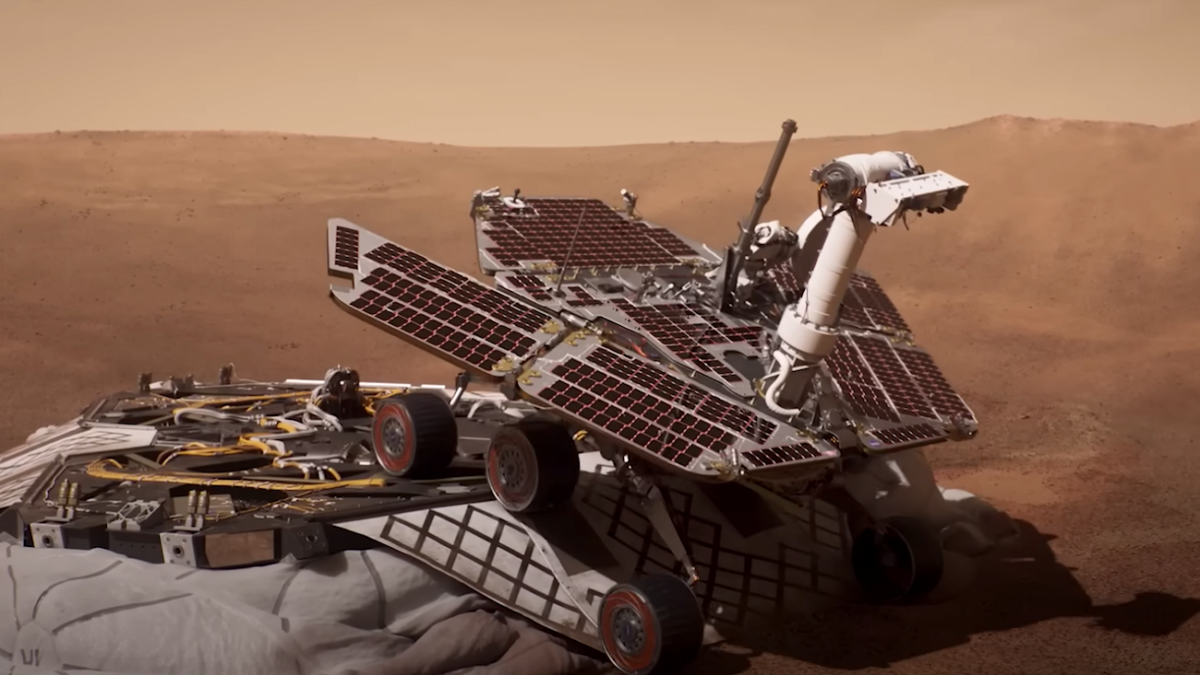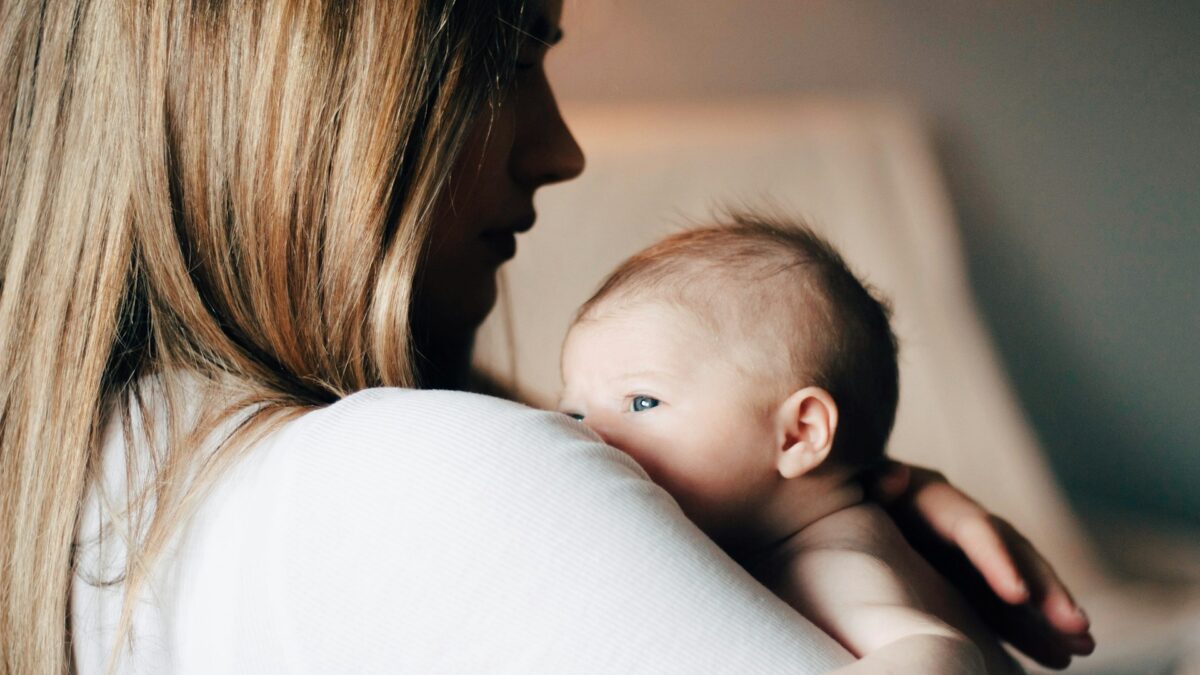Aiming to foster interest in space exploration and robotics in younger generations, the team behind a new film took a novel approach. While keeping science in full view, “Good Night Oppy,” a documentary rolling out Nov. 23 on Prime Video, tells an inspirational story as it chronicles recent scientific breakthroughs.
“At NASA, you don’t have a lot of time to grieve the end of a mission, and you move on very fast,” said director Ryan White in a phone interview. “When you speak with these people, there was a catharsis happening.”
When NASA launched Mars exploration rovers Spirit and Opportunity in July 2003, engineers expected the robots to last 90 days. Instead, they lasted much longer — with Opportunity’s mission going for 15 whole years, capturing never-before-seen footage of the red planet despite massive dust storms and treacherous craters.
One actively working NASA research scientist, Abigail Fraeman, said their team of experts recognizes there’s only so much science one can effectively cram into a feature film. White’s emotion-driven approach serves “to tell a story that’s going to be resonant with the greatest number of people — and, I hope, inspire them,” she said.
The director and his team culled through more than 1,000 hours of archive footage, mostly shot by documentarian John Beck-Hofmann, who is co-credited as cinematographer on this film.
But the secret sauce of “Good Night Oppy” also multiplied its budget beyond a typical documentary: engaging VFX artists at Industrial Light & Film (ILM) to recreate the rovers’ Mars journey, including their landing and other dramatic scenes on the red planet.
“They took all the real images the rover collected, then turned them into these amazing worlds,” said scientist Fraeman, who is briefly seen in the movie. “It was really incredible to see the detail that filmmakers put into trying to make this realistic.”
Through new interviews and archive footage, the perspective of Mars Exploration Rover Project leader Steve Squyres and other dedicated astronomers begins to rub off on viewers. And it’s clear they regard these robots not as machines but as friends.
The Little Robot that Could
The storytelling angle of attributing human characteristics to a robot isn’t covert — after all, the title features the robot’s nickname, “Oppy,” and Amblin Entertainment’s “E.T.” logo is on the poster.
White contends the film is committed to accurately recounting events. The film notes that rovers were built to stand the average human height of 5 feet and 2 inches, with cameras positioned to look like eyes.
“Our mantra in the editing room was, ‘We can’t anthropomorphize the robots any more than these human beings are willing to,’” he said. “You would think scientists and engineers would be the exact types of personalities never to do that. But in all of our sit-downs with NASA staff, each one felt an affection for this robot that was undeniable.”
However, an opening sequence veers slightly into science fiction, according to Fraeman. ILM visual artists fly viewers from a vast star field to the surface of Mars, where they’re introduced to a small but resilient rover named “Opportunity.” (Getting “WALL-E” vibes yet?)
The on-screen text makes it seem as if an Earth-bound operator and the rover are engaging in dialogue. In reality, once commands were sent from NASA’s Jet Propulsion Laboratory in Pasadena, California, it often took 30 to 60 minutes for the machine to move and then relay back its new position.
“We don’t write real-time messages to our rovers, like, ‘Oppy, Oh, it’s just your shadow,’” Fraeman told me. “Though sometimes the obstacles it faced were technically nothing more than a shadow.”
Over its 105-minute runtime — which flies by due to sharp editing of archive footage, sublime music, and dramatized on-planet scenes — viewers see early robot drive tests, get briefed on the narrow window NASA had to get their rovers to Mars, encounter in-flight sun flares that force a reboot, and, in a memorable scene that intercuts VFX with actual footage, sticks the landing.
But that’s only a precursor to the road ahead, explains White. “The genesis of the film was, ‘How do we make the audience feel like they are on this journey with the robots as it’s happening?’”
Frontiers of Discovery
Last week, “Good Night Oppy” dominated the Critics Choice Documentary Awards, winning five trophies, including best feature — an indicator it’s a top contender for an Academy Award this spring.
Naturally, scientist Fraeman cares nothing about Hollywood buzz and points to the mission’s discoveries that continue to reverberate in their work.
The rovers’ 15-year journey “showed us not only did Mars have liquid water, but that liquid water was present in many different times in its history and in many different forms,” she said. Probing craters for soil samples found historical signs of life on the dry, dusty planet.
She also cannot say enough about how this film brings their technical work to life. “When I saw the film, I knew exactly where Oppy was,” she said. “From the rim of Victoria Crater to Perseverance Valley, I remembered the images. But it was a whole new way to see them.”
Ultimately, the people of NASA and their problem-solving prowess on the frontiers of discovery are celebrated in “Good Night Oppy.” In fact, team members’ emotional attachment to the robots perhaps points to their own love of a shared mission.
“Much of the emotion came from the human beings recounting the story [of] moving on from being a part of that team,” said White. “I think to not insert that emotion would have done a disservice to the people that felt so bonded to these robots.”
Rated PG for some mild language, “Good Night Oppy” premieres via Prime Video on Nov. 23.









